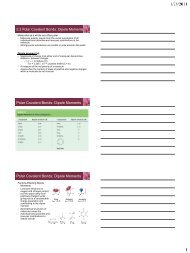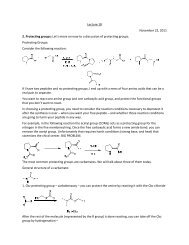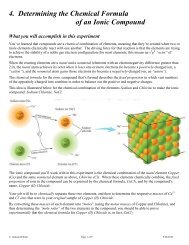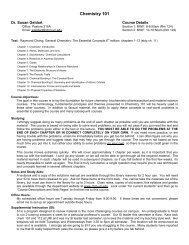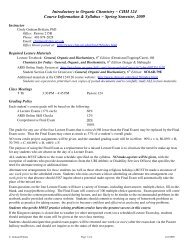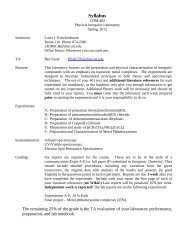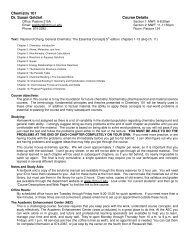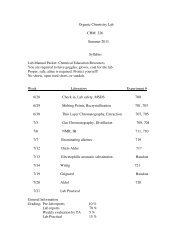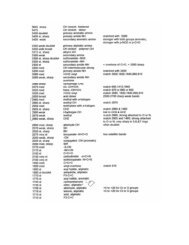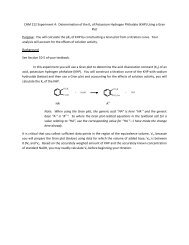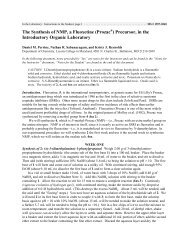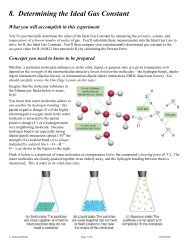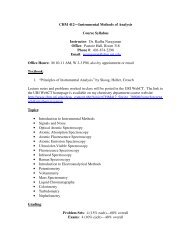Bromination-Final Draft2 - URI Department of Chemistry
Bromination-Final Draft2 - URI Department of Chemistry
Bromination-Final Draft2 - URI Department of Chemistry
You also want an ePaper? Increase the reach of your titles
YUMPU automatically turns print PDFs into web optimized ePapers that Google loves.
Toxicity <strong>of</strong> Reagents Acetic acid: Corrosive Cinnamic acid: Irritant Ethanol: Flammable, Irritant Pyridinium tribromide: Corrosive, Lachrymator Silver Nitrate: Toxic, Oxidizer, stains skin black Procedure Notes: 1.) The reaction will be performed using a technique called reflux. To understand this concept, consider a boiling pot <strong>of</strong> water. If you were to leave this liquid boiling for too long it would all evaporate. Now, if a cooling condenser is fixed to the top <strong>of</strong> the pot <strong>of</strong> water, then the hot vapors will condense and drip back into the original pot. This cycle will continue as long as the vapors don’t get too hot, and the cold temperature <strong>of</strong> the condenser is maintained. This system is referred to as refluxing. Table 1: Table <strong>of</strong> Reagents: Compound Molar Mass Quantity Density (g/mL) mmol Mole ratio (g/mol) Unknown A 180.25 100 uL 1.011 ? ? Unknown B 180.25 100 mg N/A ? ? Glacial Acetic 60.05 2.00 mL 1.049 ? ? Acid Pyridinium Tribromide 319.84 200 mg N/A ? ? Add the spin vane to the 5 mL conical vial. Make sure the vane is pointing straight down. You will be assigned an unknown alkene by your TA. Either unknown A or unknown B. Add the alkene followed by 2.00 mL <strong>of</strong> acetic acid and pyridinium tribromide successively. Record the exact masses/volumes <strong>of</strong> these reactants. To assemble the reflux apparatus, attach the conical vial to the condenser using the plastic adapter (Figure 1). Submerge the vial in the sand bath on the hot/stir plate and begin stirring. Apply heat to the apparatus by slowly increasing the temperature <strong>of</strong> the hot/stir plate. Reflux the mixture for 15 minutes, making sure all reactants have dissolved. Remove the apparatus from the sand bath and allow it to cool to room temperature. Remove the stir bar with a magnetic wand and then add 2.5 mL <strong>of</strong> deionized or distilled water. Place the vial in an ice/water bath for 15 minutes. Carefully filter the reaction mixture through a Hirsch funnel. If some precipitate goes through, filter the filtrate again to maximize yield. Let the product dry by scraping it from the funnel and apply the vacuum for 15 minutes. Transfer the product to a piece <strong>of</strong> pre-‐weighed wax weighing paper and determine the experimental yield. Calculate the percent yield <strong>of</strong> your crude product.



